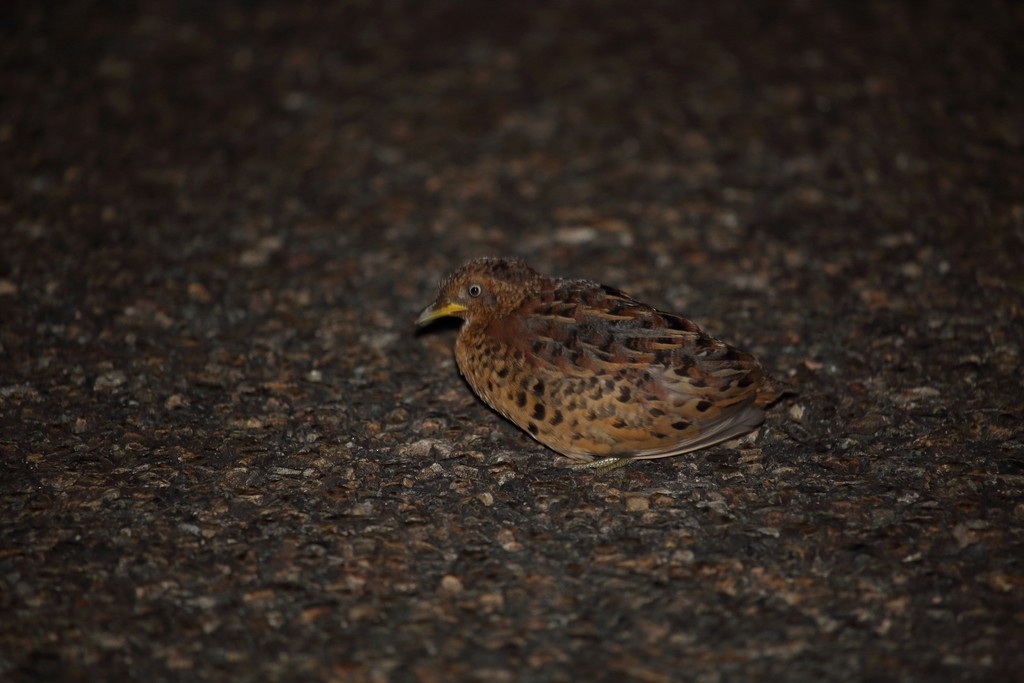Red-backed Buttonquail
A species of Buttonquail Scientific name : Turnix maculosus Genus : Buttonquail
Red-backed Buttonquail, A species of Buttonquail
Botanical name: Turnix maculosus
Genus: Buttonquail
Content
Description General Info
 Photo By seandaniels , used under CC-BY-NC-4.0 /Cropped and compressed from original
Photo By seandaniels , used under CC-BY-NC-4.0 /Cropped and compressed from original Description
The red-backed buttonquail is a small stocky bird with round-tipped wings and a short tail. The length varies between 12 and 16 cm (4.7 and 6.3 in). The female is larger than the male and weighs between 32 and 51 g (1.1 and 1.8 oz) to the male's 23 to 39 g (0.8 to 1.4 oz). The subspecies T. m. melanotus, found in northern Australia, has a pale yellow beak, yellowish irises and yellowish legs and feet. The front and top of the head are blackish scalloped with grey, and the side of the head, the neck and throat are brownish-buff, with a reddish-brown partial collar. The upper parts are slate grey, narrowly barred with reddish-brown and black. The under-wing plumage is pale grey. The lower throat is whitish, darkening to buff on the breast and belly, the sides being boldly marked with spots and scallops. The sexes are similar in appearance, but the female is more vividly coloured with a brighter yellow beak and more distinctive chestnut collar. Juveniles have a much darker colouring. Other subspecies vary slightly from this colouring. 
Size
16 cm
Nest Placement
Ground
Feeding Habits
Red-backed Buttonquail consumes seeds, grasses, and insects, showing a preference for green shoots and invertebrates, making it more insectivorous than peers. It ingests grit for digestion. Red-backed Buttonquail forages terrestrially, mainly at twilight or night, often in small groups, gleaning and scratching through litter.
Habitat
The red-backed Buttonquail is typically found in diverse grassy environments including rank grasslands, crops, sedgelands, and grassy woodland areas. These habitats are often moist or experience seasonal flooding, and may also include regions recovering from recent burns. It favors places with summer rainfall, particularly in areas receiving substantial precipitation during this season, and is associated with breeding habitats that feature dense grass near water bodies.
Dite type
Granivorous
General Info
Feeding Habits
Bird food type
Distribution Area
This buttonquail is native to southeastern Asia and Oceania. Its range extends from Indonesia, Papua New Guinea, the Philippines, the Solomon Islands and East Timor to Australia. In Australia it ranges in a coastal strip from northeastern Western Australia to Cape York and southward to northeastern New South Wales. It mostly inhabits rough, tussocky grassland, woods and cropped land. It is mostly a lowland bird but the subspecies T. m. giluwensis can be found at up over 2,000 m (6,600 ft) in east-central New Guinea. In Australia it is usually found near water and only occurs in areas with at least 400 mm (16 in) of rain in summer, and is only resident in areas with at least 800 mm (31 in) of precipitation. 
Species Status
T. maculosus has a very wide range and, apart from southeastern Australia where it is said to be uncommon, it is a common species. The total number of birds is thought to be decreasing because suitable habitat for the bird is being degraded, but the population is not declining at a sufficiently fast rate to put the bird at risk, and the International Union for Conservation of Nature has assessed its conservation status as "least concern". 
Scientific Classification
Phylum
Chordates Class
Birds Order
Shorebirds Family
Hemipodes Genus
Buttonquail Species
Red-backed Buttonquail